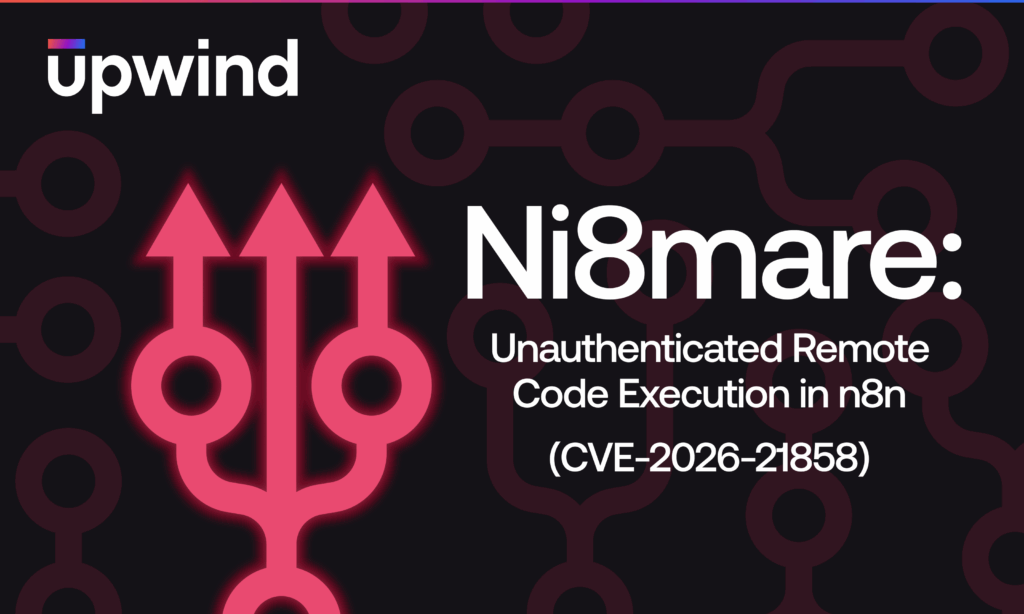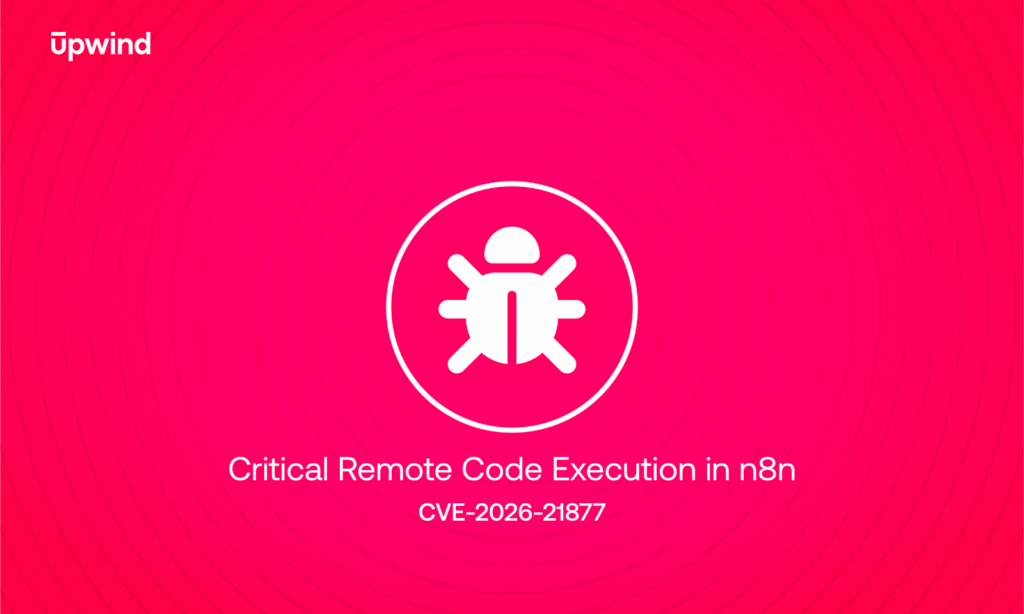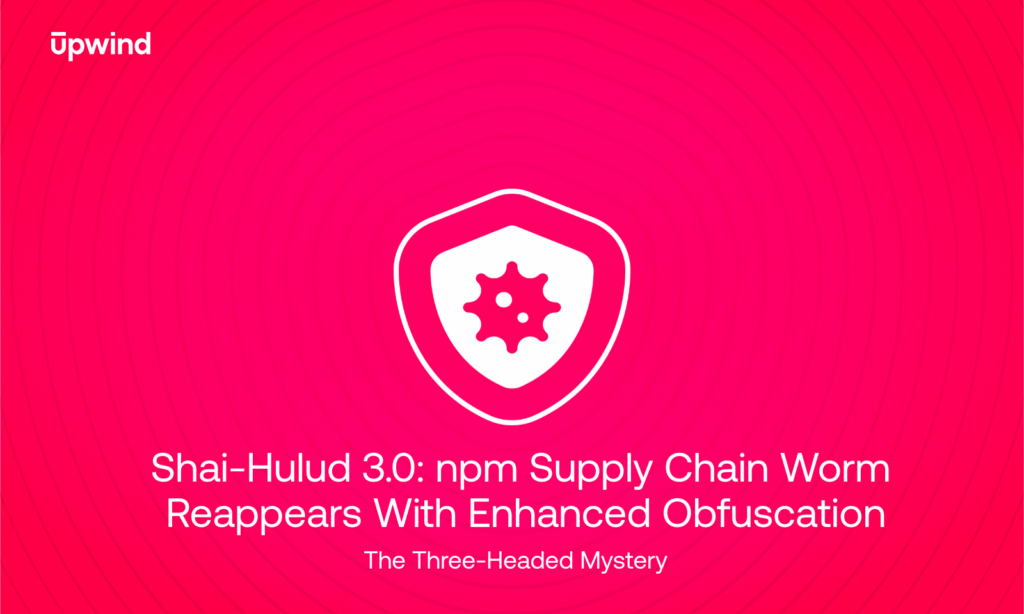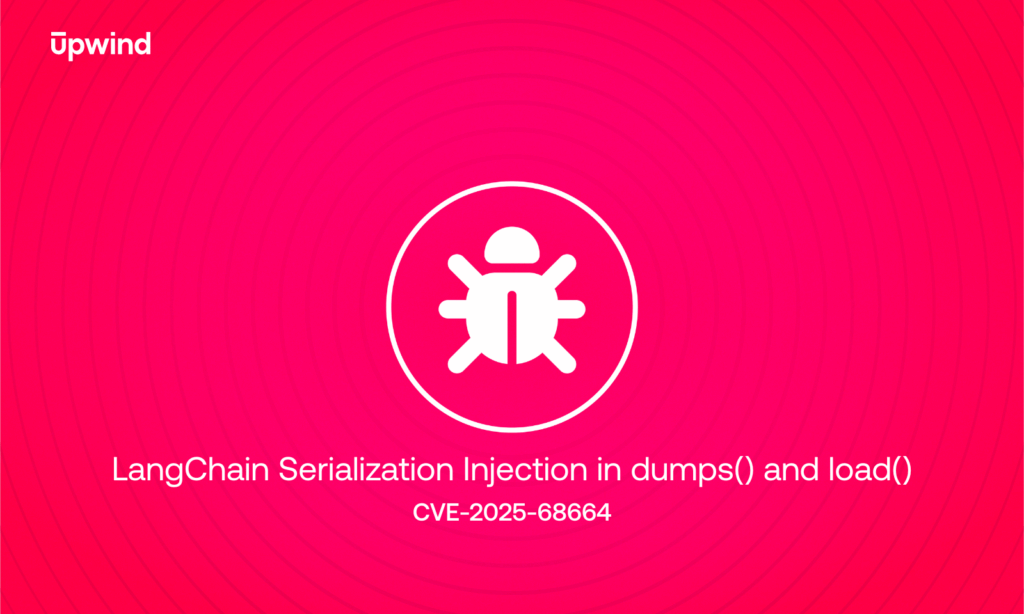
Upwind Enables Instant Validation of Configuration Fixes Through Scanner Re-Evaluation
Today, Upwind Security is introducing Scanner Re-Evaluation. Our Scanner Re-Evaluation enables customers to instantly validate configuration fixes on demand, without waiting for scheduled scans. In modern cloud environments where change is constant and speed matters, this capability closes a critical gap between remediation and confidence. Cloud security doesn’t end when a misconfiguration is identified. For […]

Upwind Enables Clarity at Cloud Scale with Choppy AI
Choppy AI is now generally available across the Upwind platform, marking a new chapter in how security teams understand risk, navigate complexity, and take action with confidence, at cloud scale. Cloud security has never been more powerful. At the same time, it’s never been more overwhelming. Modern environments generate enormous volumes of data, signals, and […]

CVE-2026-21858: Ni8mare Enables Unauthenticated RCE in n8n Webhooks
Executive Summary CVE-2026-21858 (Ni8mare) is a critical unauthenticated remote code execution vulnerability in n8n, a widely used workflow automation platform. The flaw is caused by content-type confusion in webhook request handling, allowing attackers to forge uploaded files, read arbitrary local files, forge administrator sessions, and ultimately execute commands on the underlying host. The vulnerability affects […]

Upwind Turns Every Product Update Into Immediate Security Value with “What’s New” Tab
We’re excited to introduce the new What’s New tab, an in-product experience designed to help you stay up to date with the latest Upwind releases, improvements, and innovations, right when they matter. Upwind moves fast. We continuously deliver new capabilities, logic updates, and experience improvements to help security teams stay ahead of cloud runtime risk. […]

CVE-2026-21877: Critical Remote Code Execution in n8n
Executive Summary CVE-2026-21877 is a critical remote code execution vulnerability in n8n that allows an authenticated user to execute arbitrary code on the underlying instance. The issue affects n8n versions >= 0.123.0 and < 1.121.3 and is fixed in 1.121.3 and later. In environments where n8n automates workflows with access to internal systems, credentials, and […]

Upwind Enables Deep Focus at Any Hour with Dark Mode
Dark Mode is now live across the Upwind console for all users, giving security teams greater control over how they experience the platform so they can work more comfortably, stay focused longer, and adapt the interface to their environment, without changing workflows, data, or collaboration. Security work doesn’t happen in neat, predictable blocks of time. […]

Shai-Hulud 3.0: npm Supply Chain Worm Reappears With Enhanced Obfuscation
Executive Summary: The Three-Headed Mystery Shai-Hulud 3.0, the sandworm, is back. But is it a new monster, or just the same old worm with a new trick? The security community is currently buzzing about rumors of “Shai-Hulud 3.0.” Reports suggest the sandworm has returned and panic levels are high. But when we look at the […]

Upwind Accelerates Time-to-Value for ISO/IEC 27001 and ISO/IEC 27002
We’re excited to announce that ISO/IEC 27001 and ISO/IEC 27002 frameworks are generally available across the Upwind platform. This release enables organizations to apply globally recognized information security standards more effectively within modern cloud environments, without sacrificing the governance rigor they are designed to provide. As cloud environments continue to grow in scale and complexity, […]

CVE-2025-68664: LangChain Serialization Injection in dumps() and load()
Executive Summary CVE-2025-68664 is a critical serialization injection vulnerability in LangChain that affects how data is serialized using dumps() and dumpd(), and later reconstructed using load() and loads(). The issue stems from a failure to properly escape user-controlled dictionaries that contain the reserved lc key. Because this key is used internally by LangChain to represent […]

CVE-2025-14847: MongoDB zlib Compression Memory Disclosure
Executive Summary A critical unauthenticated vulnerability (CVE-2025-14847) has been identified in MongoDB Server, affecting how the database processes zlib-compressed network traffic. Under specific conditions, a remote attacker can trigger MongoDB to return uninitialized heap memory as part of a server response. Because this data originates from process memory, it may contain fragments of previously handled […]





